|
|
Dear Colleagues
The COVID-19 outbreak changed our lives in many ways. It has also spurred a profound change in the manner of user operation at large research facilities such as SLS. In response to COVID-19, three Macromolecular Crystallography (MX) beamlines switched to 100 % remote user operation and provided rapid access to COVID-19 related research at the SLS. The MX group at SLS also joined the global research effort to combat the virus.
|

Meitian Wang
|
|
Fortunately for the user operation of the MX beamlines, the outbreak struck at the culmination of a drive towards user-directed beamline automation. Developments such as robotic sample changing, automated data collection, and remote beamline operation were critical for this leap. Our users and beamline staff have adapted to the changes smoothly. However, we miss the direct contact with users. Still, virtual interaction has enabled new practices: multiple users regularly join the same beamtime from different sites, and multiple beamline staff can support the beamline at the office, home, and on the road. We also hosted our first virtual user training successfully. How many of these practices will continue remains to be seen. However, based on this experience, whatever the future brings, we believe that the synchrotrons and their staff have the flexibility and dynamism to deliver the science of the future.
Meitian Wang
Head of the Macromolecular Crystallography Group MX, PSD division, PSI
|
|
Next proposal submission deadlines:
CHRISP
deadline: January 11, 2021
more information
SLS: non-PX beamlines
deadline: March 15, 2021
more information
SwissFEL
deadline: March 15, 2021
more information
SLS: PX beamlines
deadline: April 15, 2021
more information
SINQ
deadline: May 15, 2021
more information
SµS
deadline: June 2021 (tbc)
more information
An overview of all proposal submission deadlines of the PSI facilities can be found here.
|
|
|
Experimental observation of vortex rings in a bulk magnet
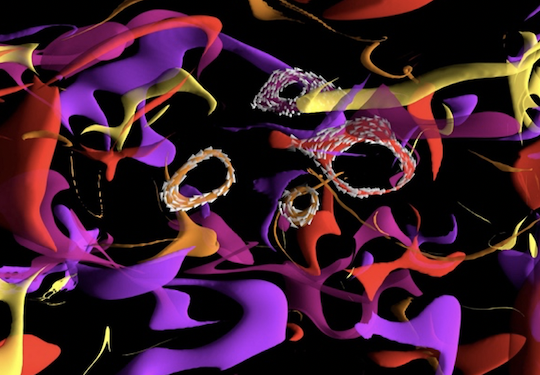 SLS — Magnetic vortices come full circle SLS — Magnetic vortices come full circle
Magnets often harbour intricate magnetization textures, some of which are at the heart of modern technologies such as hard disk drives. Now, an international team of scientists report the discovery of unexpected magnetic structures inside a GdCo2 micropillar. In ptychography experiments at SLS, they observed sub-micrometre loop-shaped configurations, which they identified as magnetic vortex rings. The existence of such structures had been predicted theoretically, but as transient phenomenon. In the experiments now reported, however, the vortex rings turned out to be surprisingly stable. Far beyond their aesthetic appeal, these textures might point the way to further complex three-dimensional structures arising in the bulk of magnets, and could one day form the basis for novel technological applications, for instance energy-efficient 3D data storage and processing.
Read the full story
|
|
|
C. Donnelly et al., Nature Physics, 30 Nov 2020 (online)
|
|
|
Statics and dynamics of emergent magnetic monopoles in a chiral magnet
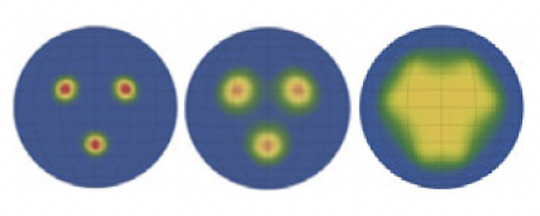
SINQ — Watching hedgehogs melt
Topological point defects in the 3D Heisenberg model known as spin hedgehogs have the intriguing property that they can behave as emergent magnetic monopoles, and hence couple strongly to conduction electrons in suitable materials. A team led by scientists from the University of Tokyo demonstrated that beyond static properties, the dynamics of the emergent monopoles also noticeably affects charge transport. Combining small-angle neutron scattering (SANS) experiments at SINQ and magnetotransport measurements, they studied the ‘melting’ transformation of a spin-hedgehog crystal in the chiral magnet MnGe. These experiments establish that by monitoring changes in the Hall effect and the SANS-peak patterns, the roles of static and dynamic emergent monopoles on magnetotransport can be both clearly distinguished and disentangled.
Read the full story
|
|
|
N. Kanazawa et al., Physical Review Letters 125, 137202 (2020)
|
|
|
Using uniaxial stress to probe the relationship between competing superconducting states
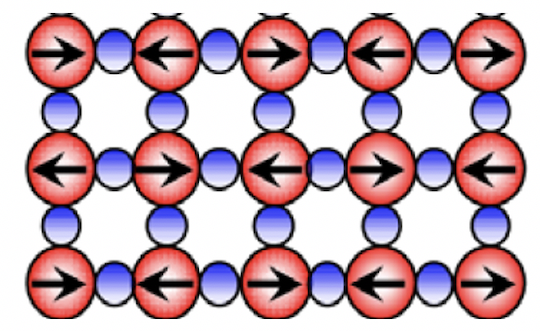
SμS — Under stress cuprates reveal some secrets
In the prototypical cuprate superconductor La2–xBaxCuO4, an intriguing competition takes place between uniform 3D and spatially modulated 2D ‘striped’ superconducting orders. An international team led by PSI scientists now provides fresh insight into the relationship between the two distinct orders. In muon spin rotation experiments, they showed that an extremely low stress of ∼0.1 GPa applied within the CuO2 planes of La1.885Ba0.115CuO4 induces a dramatic rise in the onset of 3D superconductivity. However, its 2D counterpart reacts much less sensitively to stress, showing that the variation in onset temperatures of superconductivity is quite modest as stress shifts the balance from 2D to 3D superconducting order. This suggests that the underlying pairing mechanisms are essentially the same in the alternative superconducting states with and without spin stripe order. What evolves, instead, is the degree to which fluctuations have a role and the way bulk coherence is established.
Read the full story
|
|
|
Z. Guguchia et al., Physical Review Letters 125, 097005 (2020)
|
|
|
Milestone for the second SwissFEL beamline
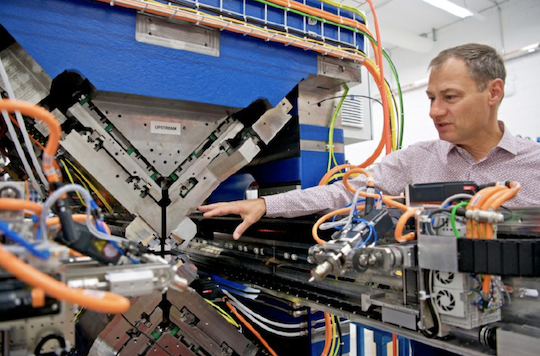
SwissFEL — Parallel operation of Aramis and Athos
In September, the new soft X-ray beamline Athos of SwissFEL has been operated for the first time in parallel with the hard X-ray beamline Aramis, which is in user operation since the end of 2017. This marks a further milestone for SwissFEL in general and the new Athos beamline in particular. Athos produced its first laser beam in December 2019, and passed the beam for the first time to the Maloja endstation in June this year. Now, the SwissFEL team has taken the important step of optimising the Athos and Aramis beamlines in parallel — with both beamlines delivering new record values in pulse energy. This provides a bright outlook for the first experiments at Athos, which are planned for 2021.
Read the full story
|
|
SNSF Ambizione grant for Franziska Hagelstein
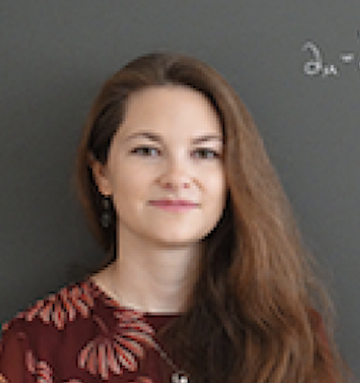 CHRISP CHRISP
Franziska Hagelstein has joined the Laboratory for Particle Physics at PSI with a Ambizione grant awarded by the Swiss National Science Foundation. Her theoretical studies are dedicated to hadronic corrections to low-energy muon anomalies. One of the goals of Hagelstein’s research is to reliably determine and reduce the dominant uncertainties in precision observables. This includes the extraction of the proton radius in muonic hydrogen, where measurements at PSI have found a significant difference of more than five standard deviations from former measurements of electronic hydrogen and from electron–proton scattering experiments. A further focus will be on the anomalous magnetic moment of the muon, where in experiments a deviation of more than three standard deviations from the Standard Model prediction had been found.
Read the full story
|
|
News from the user facilities
|
|
|
Soft X-ray microscopy with 7 nm resolution
SLS
In principle, the short wavelengths of X-rays should provide direct access to physical phenomena in the single-digit nanometre regime. In practice, soft X-ray microscopy with a 2D resolution beyond ten nanometres has long remained a challenge for both scanning and full-field X-ray microscopy. Now, PSI researchers together with an international team of collaborators demonstrate imaging with a resolution of seven nanometres, a record for direct X-ray imaging. This achievement has been made possible by a combination of lithography-based diffractive optics developed at PSI — enabling the production of Fresnel zone plate lenses with structural sizes as small as 6.4 nm — with stability and precision improvements for the PolLux and HERMES scanning X-ray microscopes at SLS.
More information |
|
Extraordinary large request for beam time in 2021
SINQ and SμS
In November and December the two submission deadlines for SINQ and SμS beam time requests have passed. In both cases the User Office received extraordinary large numbers of new proposals.
For SINQ 254 beamtime requests were submitted for the nine instruments that were already open for new proposals after the upgrade programme. Together with the previous deadline that constitutes a new record for the annual submission — with more than 450 new proposals in 2020. In particular, HRPT (50), SANS-I (42) and ICON (38) are heavily booked for the next cycle and it will be a major task for the external review panels to distribute the available beam time among the submitted requests.
There is also an enormous demand for beam time at the Swiss Muon Source. In total the user community submitted 216 new proposals for beam time in cycle I-2021. The instruments GPS (74 proposals) and DOLLY (66) are the most requested but also GPD, HAL-9500 and LEM received many new proposals. The high overbooking factors are increased additionally by a certain backlog caused by the Corona pandemic.
The review panels will gather by the end of January (SINQ) and beginning of February (SμS) and we aim at informing the users soon after that about the results.
|
|
Muon-beam transverse phase-space compression demonstrated
CHRISP
The muCool Collaboration has accomplished an important step toward their goal of producing high-brightness, low-energy muon beams for novel precision experiments with muons and muonium atoms at PSI. They demonstrated efficient transverse phase-space compression of a 12.5-MeV/c muon beam stopped in a helium gas target, reducing the vertical muon stop distribution from 14 to 0.25 mm within 3.5 µs. Combining such transverse compression with previously demonstrated longitudinal compression should enable a 10 10-fold improvement in the phase-space density of a muon beam, with
10 -3 efficiency.
More information |
|
JUSAP - The Joint Users Association:
|
|
Dear Colleagues
Representatives from the European Synchrotron and FEL User Organisation (ESUO) were invited to join the second day of the plenary meeting of the League of European Accelerator-based Photon Sources (LEAPS, November 24-25, 2020) during which, amongst other, the LEAPS-ESUO partnership was presented. Detailed information about the meeting can be found here.
Moreover, an extended general assembly meeting of the CALIPSOplus project took place as an online event on December 3, 2020. The progress achieved within the CALIPSOplus work packages, including those involving ESUO, were presented.
|
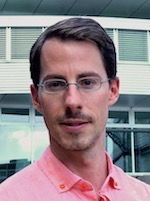
Claude Monney, JUSAP chair
|
|
The current JUSAP committee will finish its period of office in Spring 2021. Elections of the new JUSAP members will take place at the beginning of 2021. We, the current JUSAP committee, would like to seize this opportunity to thank the PSI users community for their trust and support during the past four years. It has been a great pleasure to follow the development of new facilities at PSI, as well as upgrade programmes that were very successfully achieved. We enjoyed also, as members of the JUSAP committee, sharing news and feedbacks with many different key persons at PSI, thanks to the great commitment of Stefan Janssen.
With our best wishes for 2021,
The JUSAP committee
|
|
|
|